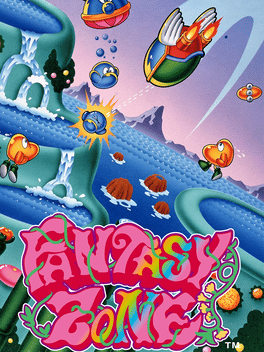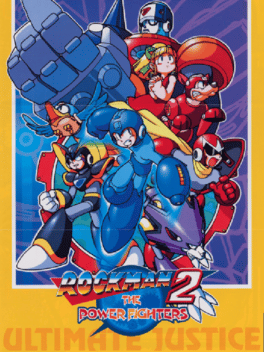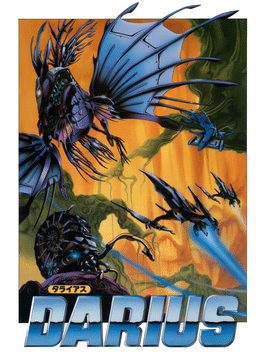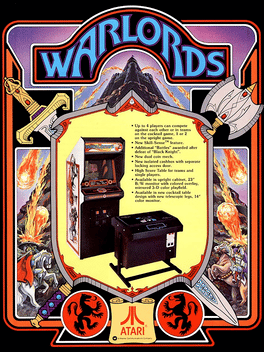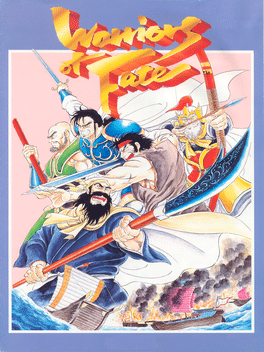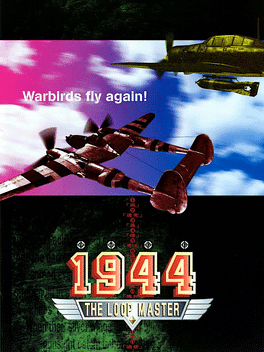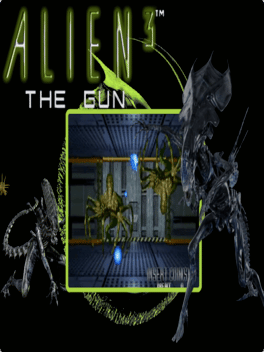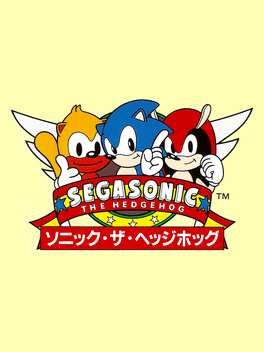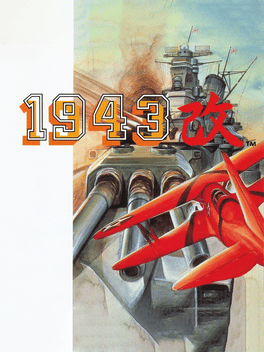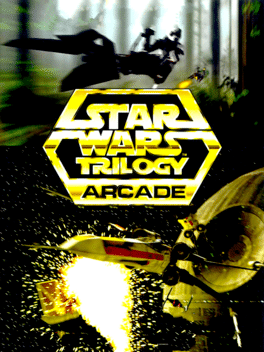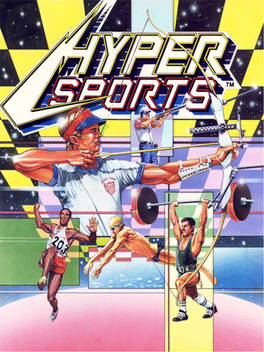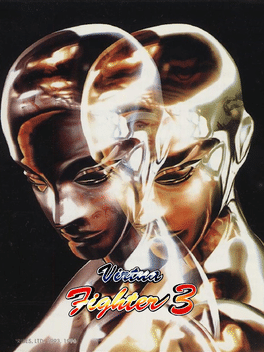Most Popular Arcade Games - Page 4
-
Astyanax
1989
Astyanax
1989
star 5Astyanax is a side-scrolling platform action game set in a fantasy world. The hero sets out to slay the evil wizard terrorizing the land. He is armed with an ax and also has a magic lightning spell that can be powered-up two times. Magic upgrades and health potions can be found in small stone pillars. The player needs to beat monsters in a number of locales, jumping across pits and fighting bosses at the end of stages. Two-palyer co-op is supported, with the second player being palette-swap of Player 1. The game was designed by Tokuhiro Takemori who previously worked on Legendary Axe, and the basic game mechanic is similar -- in order to deal heavy blow with the axe the player needs to stop swinging it for a while. The NES version released after the Arcade game, while generally having same gameplay, features completely different level layouts, enemy designs and story. -
Fantasy Zone
1986
Fantasy Zone
1986
star 7.8The Fantasy Zone is a solar system consisting of eight brightly colored, fantastic planets. The evil Menons are trying to take over all of the planets in the Fantasy Zone by using misappropriated foreign currency to build their forces. It is the player's job to recover all of the coins and save the solar system! Fantasy Zone is an arcade style shooter for one or two players. The goal is to destroy all of the creatures on each planet and collect as many of the lost coins as possible. At the end of each level is a large enemy that will have to be defeated before moving on to the next world. At various points in the game, the player will be able to find a parts shop, which allows purchasing improvements for his spaceship, including better weapons and faster engines. -
Flicky
1984
Flicky
1984
star 5.1Flicky is an arcade game made by Sega. First released in arcades in 1984, Flicky was also released at the time for the SG-1000, and then ported to the MSX and Japanese computers Sharp X1, Fujitsu FM-7 and NEC PC-8801. It was later ported to the Sega Mega Drive/Genesis in 1991. Flicky was designed by Yoji Ishii, who was with Sonic Team until August 1999, when he formed Artoon, his own company. -
Mega Man 2: The Power Fighters
1996
star 6It's a disaster: Doctor Light's lab has been attacked by Doctor Wily, and stolen some crucial parts for robots. And, if it weren't bad enough already, he has taken Roll as a hostage! Mega Man and Proto Man go to stop Wily and stumble upon Duo, the big alien robot, who is willing to help. And Bass, still angry that Wily has revived more Robot Masters, again teams up with the good side to destroy the enemies... -
Darius
1987
Darius
1987
star 5.4Darius is a two-dimensional horizontally scrolling shoot 'em up set in a fictional future. Uniquely among shoot 'em ups, the game's screen is three times wider than conventional size, and the arcade cabinet uses an arrangement of three screens to accommodate it. The player controls an ornate fighter spacecraft, named the Silver Hawk, and must navigate through scrolling terrain while battling a variety of fighter craft, ground vehicles, turrets, and other obstacles throughout the game's stages (referred to as zones in the game). The ship's arsenal consists of forward-firing missiles, aerial bombs and a protective force field, all of which can be upgraded by power-ups (in the form of large, colored orbs) that are dropped by specially-colored enemies throughout the game's zones. When the player reaches the end of a zone, a boss appears, which must be defeated to proceed. Once the boss of a zone is destroyed, the player is given a choice of which zone to play next via a branching path. While there are 28 zones in total -
Warlords
1980
Warlords
1980
star 5.3Warlords is an arcade game released by Atari, Inc. in 1980. The game resembles a combination of Breakout and Quadrapong (an early Atari arcade game) in the sense that not only can up to 4 players play the game at the same time, but also the "forts" in the four corners of the screen are brick walls that could be broken with a flaming ball. Warlords uses spinner controllers for player control, and came in both an upright 2 player version and a 4 player cocktail version. The upright version uses a black and white monitor, and reflects the game image onto a mirror, with a backdrop of castles, giving the game a 3D feel. The upright version only supports up to two simultaneous players, which move through the levels as a team. The cocktail version is in color, and supports 1-4 players. 3-4 player games are free-for-all's where the game ends as soon as one player wins. 1-2 player games play identical to the upright version. -
P.O.W.: Prisoners of War
1988
star 6.8The arcade version of Prisoners of War can be played by up to two players simultaneously, In La Havana, Cuba Player 1 controls a prisoner dressed in blue named Snake, while Player 2 controls one in red named Bart. The objective is to escape from the enemy's base by fighting their way through four stages filled with numerous soldiers trying to impede the player's escape. The stages consist of a POW camp, a warehouse, a jungle, and the enemy's base. Enemies includes foot soldiers, commandos, and green berets. The controls consists of an eight-way joystick for moving the character and three action buttons for punching, kicking, and jumping. here are also three special attacks performed by pressing two buttons in combination: a jump kick (jump, and then kick), a back punch (jump and punch simultaneously), and a headbutt (punch and kick simultaneously). The player can also pick up one of two weapons dropped by defeated enemies: a throwing knife and a machine gun. When wielding the machine gun, the player can fire it b -
Warriors of Fate
1992
Warriors of Fate
1992
star 7.8Warriors of Fate is a beat'em up with nine stages. Each contains large mobs including spearman, archers, strongmen, bomb-wielding opponents, and at least one boss. Using two buttons, Attack and Jump, the characters all have standard moves typical of Capcom side-scrollers of the day. There is also a variety of weapons in the game which can be picked up. As with most side-scrollers, food is used to replenish health and can be found in various breakable containers in the game level. One notable feature of the game is the ability to summon a warhorse which adds more attacks to the characters, generally involving pole-arms. Most characters are given a special wrestling throw of their own, like in Final Fight and The Punisher. In the Japanese version, the game follows Liu Bei's plight in Jingzhou from the Romance of the Three Kingdoms, a history-based novel from China, set in the Three Kingdoms period as Cao Cao sets to invade his lands. In the English adaptation, however, the Three Kingdoms theme was lost, and most na -
Atomic Punk
1991
Atomic Punk
1991
star 7.5Atomic Punk (alternatively known as Dynablaster or Bomberman) is an arcade game featuring a single and multiplayer mode. In the year 2091, robot contests have gained popularity. Only the strongest robot can survive. -
1944: The Loop Master
2000
star 6The game takes place in the heated battles of 1944 during the Second World War as a super ace pilot attempts to defeat an entire army. The game operates and plays like most standard shooters. The objective of every level is to shoot enemy planes, tanks, trains, turrets, battleships, and defeat the boss after each level. Unlike its predecessor, 19XX: The War Against Destiny, the game plays more like the early games in the series. -
Tiger Heli
1985
Tiger Heli
1985
star 5.4Tiger Heli was one of the first games developed by Toaplan and published by Taito Corporation in 1985. It is a predecessor to Twin Cobra. The player controls a helicopter named Tiger Heli taking out various enemies along the way. -
Alien3: The Gun
1993
Alien3: The Gun
1993
star 7.9Using cabinet mounted guns you and another player blast away the Aliens in an attempt to save the prison planet. You are also given a limited number of grenades to use when the going gets tough. The gameplay is very close to Sega’s other lightgun games from the period such as Gunblade and Jurassic Park. This game was based on the movie of the same name. -
SegaSonic the Hedgehog
1993
star 5.9SegaSonic the Hedgehog is an isometric platforming game with three characters who shares identical controls and abilities. The characters are controlled with one action button which lets the player perform a spin jump, and a trackball which is used to move the characters around. Each trackball and corresponding action button are color-coded, meaning the blue ones are for Sonic, red ones are for Mighty and yellow ones are for Ray. The premise of the game is to reach the end of an isometric course without dying. This objective is similar to other video games in the Sonic the Hedgehog series. Yet, it is also different in the sense that instead of a typical platforming game, the game is centered entirely around running as fast as possible on a linear course from a never-ending barrage of threats, including giant boulders, lava flows, rogue gears, falling stalactites, and other traps. When the player is hit by a dangerous obstacle or hazard, they lose health from the Health Gauge, which can be refilled by collecting Ri -
1943 Kai: Midway Kaisen
1988
star 6.8This updated version was released exactly one year after the original game's debut. 1943 Kai is an enhanced, "wild" version of 1943 that was made only available in Japan under the name 1943 Kai: Midway Kaisen (or 1943改: ミッドウェイ海戦). Most of the graphics and sounds have been reworked, the weapons have been made more extreme and some fairly strange things (laser-firing WWII planes and ships that run on ground) have been added. The trademark P-38 has been replaced with a biplane, the Boeing-Stearman Model 75. -
Star Wars Trilogy Arcade
1998
star 7.9Star Wars Trilogy Arcade is an arcade game first released in 1998. The game is a 3-D rail shooter based on the original trilogy of Star Wars films and was released along with the special editions of these films. Sega also released an accompanying pinball game. The game is not to be confused with Star Wars Arcade, another Star Wars game released to arcades by Sega in 1993. -
TumblePop
1991
TumblePop
1991
star 7.6Tumblepop is a 1991 platform arcade video game developed by Data East first published in Japan by Namco, then in North America by Leprechaun Inc. and later in Europe by Mitchell Corporation. Starring two ghosthunters, players are tasked with travelling across different countries, capturing enemies and throwing them as bouncing ball, jumping on and off platforms to navigate level obstacles while dodging and defeating monsters in order to save the world. -
R-Type Leo
1992
R-Type Leo
1992
star 8.4R-Type Leo is a horizontally scrolling shooter arcade game. It is a spin-off of the R-Type series and the last entry to be released in Arcades. R-Type Leo was initially an original shoot 'em up game in development by Nanao before Irem retooled it into an R-Type project instead. It is also the first R-Type game to feature simultaneous two player gameplay. -
Hyper Sports
1984
Hyper Sports
1984
star 6.8Six tough events await in this joystick-waggling action game. The full sequence of events is - swimming, skeet shooting, gymnastics, archery, triple jumping and weightlifting. You must complete each event in order to be allowed onto the next one. Swimming involves moving left and right as fast as possible, while pressing fire when a breath is required. Skeet shooting and archery both come down to timing - though elevation and wind factors affect the latter. Gymnastics involves timing a succession of presses to ensure that the jump is long and the landing graceful. The triple jump involves one press for each part of the jump, whereas the weightlifting involves merely brute strength. -
Virtua Fighter 3
1996
Virtua Fighter 3
1996
star 8.8Virtua Fighter 3 is the third fighting game in the Virtua Fighter series. Two new Japanese characters were added to the roster of fighters: Aoi Umenokoji, a beautiful Japanese woman and a childhood friend of Akira Yuki who used a nimble form of Aiki-jujutsu as her fighting style of choice, and Taka-Arashi, a Sumo wrestler from Japan. Taka Arashi would not make another appearance in the Virtua Fighter series until Virtua Fighter 5 R; the series' current producer, Hiroshi Kataoka explained that the removal of Taka in subsequent installments was due to the technical implications of having a substantially larger character. -
Section-Z
1985
Section-Z
1985
star 6.9Section-Z is a side-view shoot-'em-up by Capcom originally released as a coin-operated video game in 1985. A home version was released for the Nintendo Entertainment System in 1987. The original coin-op game is included in Capcom Classics Collection Vol. 1 for PlayStation 2 and Xbox.

